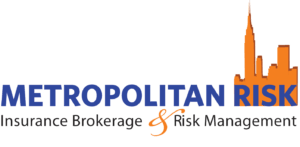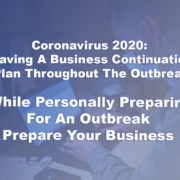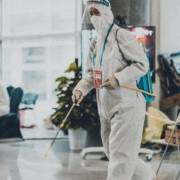You had to close down your business from a full office of employees to a remote workforce for several weeks. With states slowly starting to lift social distancing restrictions, you are considering what comes next in terms of safely reopening your business. Reopening your business is going to be more than walking in, turning on the lights, and flipping the “Sorry We’re Closed” sign back to “Yes, We’re Open”. Your organization needs a strategy that everyone from management to line workers can agree is a safe plan to reopen.

While creating a strategy to reopen, consider what goals you need to reach to reopen safely. Your first priority should be the safety and health of your front line staff. Remember, that the Coronavirus (COVID-19) is still a threat to your organization and your employees can still catch the virus. Employees should not gain entrance to the physical job location until:
- New policies are in place regarding safety and illness in the workplace
- More information is available to whether or not employees with immunities can transmit the virus to nonimmune employees
- More information on how the virus spreads is available
Creating distance at the workplace
You may need to rearrange your office space to keep employees 6ft away from each other. This includes common areas like shared kitchens and shared lunchrooms. Cubicles that were once shared by 2 people will need to be one person per cubicle to ensure social distancing measures. Commonly shared areas will also need to be redesigned to minimize contact between employees. If common areas cannot be redesigned to accommodate the 6ft. distancing needs of employees, consider staggering lunch shifts. Or having employees eat lunch at their desks to minimize the risk of transmission of the virus.
Protecting your “at-risk” employees
Discussion of an employee’s medical information in a public forum is prohibited under the Americans With Disabilities Act (ADA), you may want to have a private conversation with these employees about options they have to lessen their risks. Current information on Covid-19 suggests that those who are immunocompromised or those who have significant underlying medical conditions may be more susceptible to catching Covid-19.
During this discussion ask employees to consider their own health and potentially ask them to work remotely, take time off or other options if they feel their situation warrants additional measures.
Currently, the CARES Act exempts small businesses with less than 50 employees from providing the 2 weeks paid leave that the act requires.
Use some common sense
Everyone is eager to return to normal routines, but safely. Changes in procedures can include purchasing items to help protect everyone in your workplace. This list is an example of some of the items you might want to procure before bringing employees back to the workplace:
- Skin Thermometers
- A Log To Keep Temperature Information In
- Face Masks
- UV disinfection Light
- Disinfectant cleaners
- Rubber Gloves
Ask yourself these questions about your employees’ safety before reopening your doors:
- What are the goals for the safe return of all of our employees?
- Do we have enough space to have everyone return at once, if not how do we create an alternating schedule to accommodate everyone?
- Are my employees working at a safe distance away from each other?
- Does our office have enough space to keep employees 6ft away from each other?
- How often will the office be professionally cleaned?
- Who will be responsible for managing wiping the surfaces in the office down?
Remember, the return to the office needs to be a strategic plan that every employee needs to be on board with. If your employee is refusing to comply with these new rules, have you considered how your employee handbook will also reflect these new office changes?
Still need more information on creating a strategic plan for reopening your business? Contact a risk advisor at 914-357-8444.








 Photo by Christopher Gower on Unsplash
Photo by Christopher Gower on Unsplash